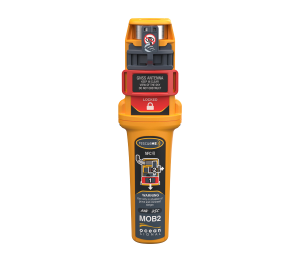
Blog
DUTCH SAILOR FORCED TO ABANDON YACHT IN 2022 ARC EMERGENCY HIGHLIGHTS LIFESAVING EPIRB

In the ever-evolving landscape of maritime safety regulations, one recent development is poised to reshape the way we approach Man Overboard (MOB) smart alert incidents at sea. The European regulation ECC/DEC/(22)02, introduced in 2022, has sparked significant discussion and adaptation within the maritime community, particularly concerning AIS (Automatic Identification System) Man Overboard Beacons. Let’s delve into the details of AIS Class M Regulations or ECC/DEC/(22)02 and explore how its implications for safety at sea.
Understanding ECC/DEC/(22)02
ECC/DEC/(22)02, also known as the AIS Class M regulation, represents a proactive step towards enhancing the efficiency and reliability of AIS transmissions in European waters. Enacted to mitigate the risk of AIS overload from non-essential off-ship devices, such as fishing net markers, this regulation imposes more stringent requirements on AIS MOB devices.

Key Provisions and Implications
The importance of ECC/DEC/(22)02 lies in the classification of AIS MOB devices. From December 31st, 2024, only Class M DSC (Digital Selective Calling) MOB devices and Mobile AtoN (Mobile Aid to Navigation) will be permitted to utilize AIS Channels 1 & 2. This distinction aims to prioritize critical distress signals and streamline smart alert communications between vessels and search and rescue authorities.
Impact on AIS Man Overboard Beacons
For manufacturers and users of AIS Man Overboard Beacons, ECC/DEC/(22)02 heralds a paradigm shift in device design and functionality. Current AIS MOB devices, lacking DSC capabilities or receivers, could potentially be restricted in select countries. Consequently, vessel operators must ensure their equipment aligns with Class M standards to maintain regulatory compliance and maximize safety outcomes.
Technical Bulletin on the use of MOB1 in European Countries After January 1, 2025
Ocean Signal rescueME MOB2: Meeting Class M Standards
Amidst the regulatory changes, Ocean Signal emerges as a beacon of innovation with its new rescueME MOB2 AIS Man Overboard Beacon. Engineered to meet Class M requirements, the MOB2 stands at the forefront of compact yet powerful maritime safety solutions. Equipped with two-way signalling, real-time location tracking via AIS, and seamless integration of DSC for swift alerts, the MOB2 ensures unparalleled reliability and effectiveness in MOB scenarios, at a fraction of the size of other devices being marketed.

Conclusion
As ECC/DEC/(22)02 comes into effect, its significance reverberates throughout the maritime industry, signalling a new era of AIS MOB beacon regulation and compliance. By embracing Class M standards and investing in smart alert advanced technologies like the Ocean Signal MOB2, vessel operators can navigate these changes with confidence, safeguarding lives and promoting safety at sea. Stay informed, stay compliant, and prioritize safety—because in the vast expanse of the ocean, every second counts.
Sign Up Below To Our Newsletter for More on the new rescueME MOB2
NOT RED or FCC Approved.
This device (The Ocean Signal rescueME MOB2_ has not been authorized as required by the rules of the FCC. This device is not, and may not be offered for sale or lease, or sold or leased until authorization is obtained.